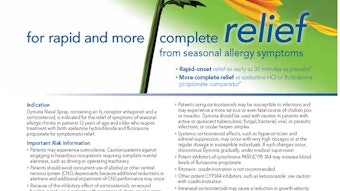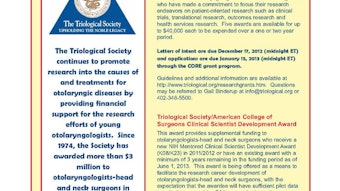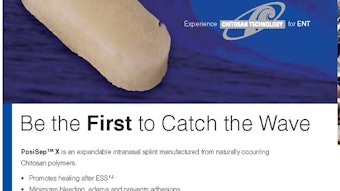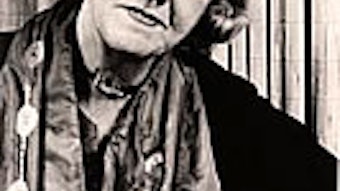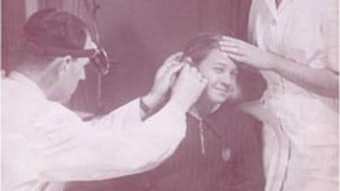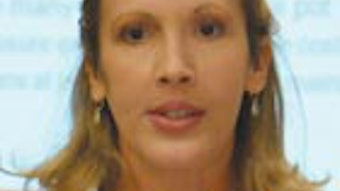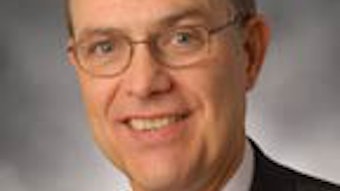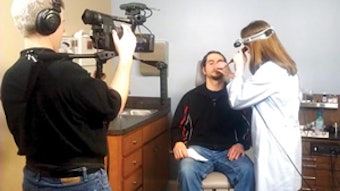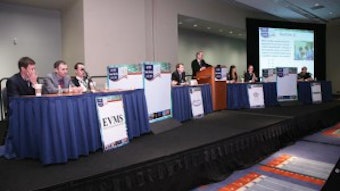CPT Changes for 2013: What ENTs Need to Know
As the medical community has come to expect, part of the annual rulemaking process conducted by the Centers for Medicare and Medicaid Services (CMS) includes the annual issuance of new and modified CPT codes, developed by the American Medical Association’s (AMA) Current Procedural Terminology (CPT) Editorial Panel, for the coming year. In addition, CMS includes new, or updated, values—also known as relative value units (RVUs)—for medical services, which have undergone review by the American Medical Association’s Relative Update Committee (AMA RUC). CMS has the discretion to accept the RUC’s RVU recommendations for physician work, and their recommendations for direct practice expense inputs, or they may exercise their administrative authority and elect to assign a different value, or practice expense inputs, for medical procedures paid for by Medicare. The final value, as determined by CMS, is then publicly released in the final Medicare Physician Fee Schedule (MPFS) rule for the following calendar year. The Academy is an active participant in both the AMA RUC valuation of otolaryngology-head and neck services, and the CMS annual rulemaking processes. As part of those efforts, we want to ensure members are informed and prepared for key changes to CPT codes and valuations related to otolaryngology-head and neck surgery serviced for CY 2013. The following outlines a list of coding changes, including new and revised CPT codes, and codes that were reviewed by the AMA RUC and could have modified Medicare reimbursement values for 2013: New Codes In CY 2013, several new CPT codes will be introduced, including: Two new codes to report pediatric polysomnography for children under the age of six. These services will be reported using new CPT codes 95782 and 95783. Two new codes to report intraoperative neurophysiology monitoring in the operating room. This also includes new introductory language in that section of the CPT book. These services will be reported using new CPT codes 95940 and 95941. Codes Reviewed by the AMA RUC The AMA RUC reviewed several codes relating to otolaryngology and their RUC-approved values were submitted to CMS for final determination for the CY 2013 final rule. Members should be prepared for modified relative value units for some, or all, of these procedures in CY 2013. It is critical to note that once the final MPFS is issued by CMS, typically on or about November 1 of each year. Academy health policy staff will summarize the final rule and alert members to any critical changes in reimbursement for any of the following medical procedures. Services that were reviewed include: 31231 Nasal endoscopy, diagnostic, unilateral or bilateral (separate procedure) 40490 Biopsy of lip 69200 Removal foreign body from external auditory canal; without general anesthesia 69433 Tympanostomy (requiring insertion of ventilating tube), local or topical anesthesia 13132 Repair, complex, forehead, cheeks, chin, mouth, neck, axillae, genitalia, hands and/or feet; 2.6 cm to 7.5 cm 13151 Repair, complex, eyelids, nose, ears and/or lips; 1.1 cm to 2.5 cm 13152 Repair, complex, eyelids, nose, ears and/or lips; 2.6 cm to 7.5 cm New codes for pediatric polysomnogoraphy 95782 younger than six years, sleep staging with four or more additional parameters of sleep, attended by a technologist 95783 younger than six years, sleep staging with four or more additional parameters of sleep, with initiation of continuous positive airway pressure therapy or bi-level ventilation, attended by a technologist New add-on codes for intraoperative neurophysiology monitoring +95940 Continuous intraoperative neurophysiology monitoring in the operating room, one on one monitoring requiring personal attendance, each 15 minutes (List separately in addition to code for primary procedure.) +95941 Continuous intraoperative neurophysiology monitoring, from outside the operating room (remote or nearby) or for monitoring of more than one case while in the operating room, per hour (List separately in addition to code for primary procedure.) As noted above, health policy staff will provide members with a detailed summary of CMS approved values for the above services once they are issued in the 2013 final MPFS. Should members have any questions regarding the above information in the meantime, email healthpolicy@entnet.org.
As the medical community has come to expect, part of the annual rulemaking process conducted by the Centers for Medicare and Medicaid Services (CMS) includes the annual issuance of new and modified CPT codes, developed by the American Medical Association’s (AMA) Current Procedural Terminology (CPT) Editorial Panel, for the coming year. In addition, CMS includes new, or updated, values—also known as relative value units (RVUs)—for medical services, which have undergone review by the American Medical Association’s Relative Update Committee (AMA RUC). CMS has the discretion to accept the RUC’s RVU recommendations for physician work, and their recommendations for direct practice expense inputs, or they may exercise their administrative authority and elect to assign a different value, or practice expense inputs, for medical procedures paid for by Medicare. The final value, as determined by CMS, is then publicly released in the final Medicare Physician Fee Schedule (MPFS) rule for the following calendar year.
The Academy is an active participant in both the AMA RUC valuation of otolaryngology-head and neck services, and the CMS annual rulemaking processes. As part of those efforts, we want to ensure members are informed and prepared for key changes to CPT codes and valuations related to otolaryngology-head and neck surgery serviced for CY 2013. The following outlines a list of coding changes, including new and revised CPT codes, and codes that were reviewed by the AMA RUC and could have modified Medicare reimbursement values for 2013:
New Codes
In CY 2013, several new CPT codes will be introduced, including:
Two new codes to report pediatric polysomnography for children under the age of six. These services will be reported using new CPT codes 95782 and 95783.
Two new codes to report intraoperative neurophysiology monitoring in the operating room. This also includes new introductory language in that section of the CPT book. These services will be reported using new CPT codes 95940 and 95941.
Codes Reviewed by the AMA RUC
The AMA RUC reviewed several codes relating to otolaryngology and their RUC-approved values were submitted to CMS for final determination for the CY 2013 final rule. Members should be prepared for modified relative value units for some, or all, of these procedures in CY 2013. It is critical to note that once the final MPFS is issued by CMS, typically on or about November 1 of each year. Academy health policy staff will summarize the final rule and alert members to any critical changes in reimbursement for any of the following medical procedures. Services that were reviewed include:
31231 Nasal endoscopy, diagnostic, unilateral or bilateral (separate procedure)
40490 Biopsy of lip
69200 Removal foreign body from external auditory canal; without general anesthesia
69433 Tympanostomy (requiring insertion of ventilating tube), local or topical anesthesia
13132 Repair, complex, forehead, cheeks, chin, mouth, neck, axillae, genitalia, hands and/or feet; 2.6 cm to 7.5 cm
13151 Repair, complex, eyelids, nose, ears and/or lips; 1.1 cm to 2.5 cm
13152 Repair, complex, eyelids, nose, ears and/or lips; 2.6 cm to 7.5 cm
New codes for pediatric polysomnogoraphy
95782 younger than six years, sleep staging with four or more additional parameters of sleep, attended by a technologist
95783 younger than six years, sleep staging with four or more additional parameters of sleep, with initiation of continuous positive airway pressure therapy or bi-level ventilation, attended by a technologist
New add-on codes for intraoperative neurophysiology monitoring
+95940 Continuous intraoperative neurophysiology monitoring in the operating room, one on one monitoring requiring personal attendance, each 15 minutes (List separately in addition to code for primary procedure.)
+95941 Continuous intraoperative neurophysiology monitoring, from outside the operating room (remote or nearby) or for monitoring of more than one case while in the operating room, per hour (List separately in addition to code for primary procedure.)
As noted above, health policy staff will provide members with a detailed summary of CMS approved values for the above services once they are issued in the 2013 final MPFS. Should members have any questions regarding the above information in the meantime, email healthpolicy@entnet.org.

